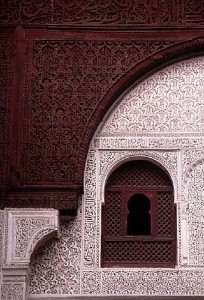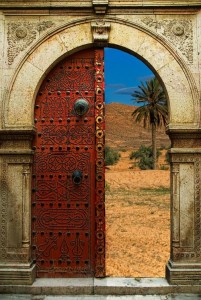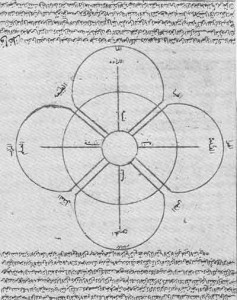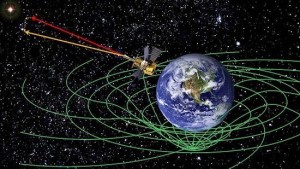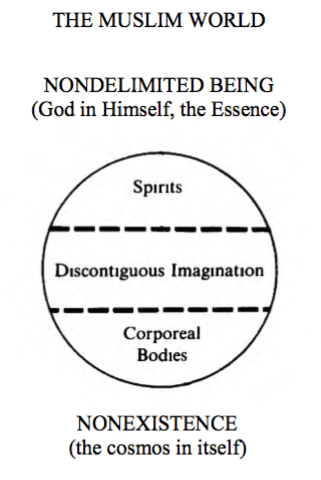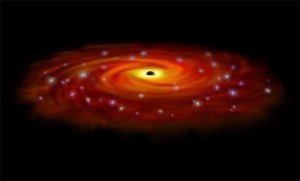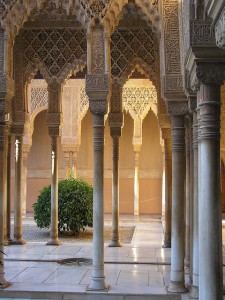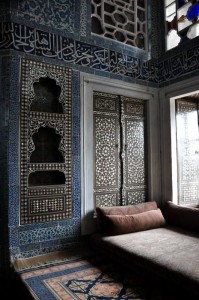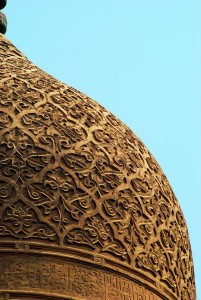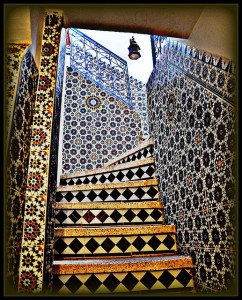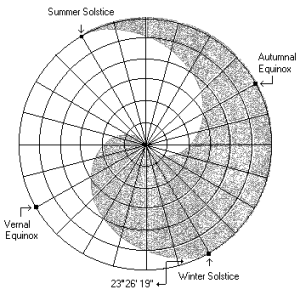The Islamic Lataif, Chinese Meridians, and Buhddist and Hindu Chakras and Their Basis In Islamic Law
The Dua Of Light; the Prophet (saws) often prayed in Sujood, “O Allah, place light in my heart, and on my tongue light, and in my ears light and in my sight light, and above me light, and below me light, and to my right light, and to my left light, and before me light and behind me light. Place in my soul light. Magnify for me light, and amplify for me light. Make for me light, and make me light. O Allaah, grant me light, and place light in my nerves, and in my body light and in my blood light and in my hair light and in my skin light.” (Bukhari)
“O Allaah, make for me a light in my grave… and a light in my bones.” (Tirmidhi)
“Increase me in light, increase me in light, increase me in light.” (Bukhari, adab al mufrad)
“Grant me light upon light.” (Bukhari)
The Origins of the Lataif in Islam lie in medicine and science, it originated with the work of Imam Kubra in the twelfth century regarding dream and vision interpretation. As his work and tariqa spread through the muslim world it also influenced the teachings of the Buddhist, Chinese and Hindu religions because Islamic society was the most advanced in the world at the time.
This subject has always been at the core of islam since it’s first days, beginning with the prophet (saws) himself who would teach the companions how to interpret dreams and visions as well as the science of the self, among the early generations the famous and highly respected Tabi’i scholar Imam Ibn Sireen, who was born in 33 AH (653AD) during the rule of Uthman ibn Affan (ra), wrote a famous book on dream and vision interpretation which encompassed much of that knowledge, it survives to this day and has been translated into english. The Imam himself was a zahid (ascetic) the equivalent among the tabiin (first generation of muslims) to what was later termed sufi, the Zahid’s in the Ummah would organise into Tariqa’s (schools) to better teach the spiritual side of Islam just as the faqih’s (Lawyers) would organise into Madhhabs (legal schools), this tradition survives to this day in the many tariqa’s (sufi schools) that exist around the world.
It is difficult to say what specifically advanced this knowledge in Islam but a look at the Islamic world during the 12th and 13th century will tell us this was the period of Islam’s golden age of scientific and social discovery, besides making countless discoveries of their own, the Muslim world took outdated knowledge from all areas of the world it spread to and advanced it to a level never seen before, so advances in understanding the physiology of spirituality was inevitable. This began with scholars who’s people had converted to Islam in these new lands, they adopted the islamic way of looking at the world and thus began the work of advancing their own traditions (science). Persian muslims would advance Persian science, Indian muslims would advance Indian science, Chinese muslims would advance Chinese science all the while taking from the wider islamic community that they where now connected to to aid in this process, in this way the religion of Islam was instrumental in spreading science on earth in an unprecedented manner and specific regions in the muslim world began to lead the world in science.
This process came under the Shariah Laws of Urf (custom and culture) and hence Islam protected people’s naturel identity. It is impermissible to make tahrim (declare a thing impermissible) as some modern heretical sects took to doing simply because of it’s origin, because Islam accepts peoples cultures and backgrounds, it was something Allah himself created and He stated it in the Quran in very clear terms, “O mankind! We created you from a single (pair) of male and female, and made you into nations and tribes, that ye may know each other (not that ye may despise and reject each other). Verily the most honoured of you in the sight of Allah is (he who is) the most righteous of you. And Allah has full knowledge and is well acquainted (with all things, meaning all cultures).”(49:12)
This is relevant today because some heretical sects denounce entire fields of science because they come from a region of the world they are racist against, which is another evil Allah condemns in the Quran. They contradict many of the prophets (saws) instructions, for example the Prophet (saws) instructed that we should “seek knowledge even unto China” (al-Munawi cites al-Dhahabi’s Talkhis in which he said it is a widely reported narration, some of its chains are weak, and some are sound), the prophet (saws) also said “The Search of Knowledge is an obligation laid on every Muslim” (Ibn Majah and Baihaqi) meaning on every muslim in every part of the world.
The Messenger of Allah acknowledge in the 7th century that China was an advanced society and had knowledge about this world we should seek out, the companions visited China not long after the prophet’s (saws) death because of this. As a result of the Islamic golden age, which Allah himself promised his prophet (saws) in number of narrations, Europe was taken out from the Dark ages by fuelling it’s enlightenment and it helped greater India, China and Asia recover from the Mongol Horde that devastated it.
The Prophet (saws) said “I have been sent with ‘Jawami-al-Kalim’ (the shortest expressions with the widest meaning and knowledge) and have been made victorious with awe, and while I was sleeping, I saw that the keys of the treasures of the world (which means the knowledge present among other nations) were placed in my hand.” Abu Huraira added: Allah’s Apostle has gone, and you people are utilizing those treasures (knowledge), or digging those treasures out.’(Bukhari) in other words making use of old knowledge from every region on earth, the spread of knowledge by Islam was something clearly promised to the prophet (saws) by Allah, and this is exactly what occurred throughout history.
The Messenger of Allah (saws) said: “Indeed Allah gathered the earth for me so that I saw its east and its west. And surely my Ummah’s authority shall reach over all that was shown to me of it. And I have been granted the two treasures; the red (Roman empire, were the Greek sciences were taken from) and the white (Persian empire, were over 200 of Islam’s greatest scholars and scientists would come from). I asked my Lord that my Ummah is not to be destroyed by a universal drought, and that He does not overcome them by enemies outside of them, reaching to their heart of power (Madina and Makkah). My Lord said: ‘O Muhammad! When I issue a decree it is not reversed. I have granted for your Ummah that they shall not be destroyed by universal drought. And that they not be overcome by enemies outside of themselves reaching to their heart of power even if they gather against them from all the regions.”’ Or he said: “Among the regions. But some of them will destroy others, and some will capture others.”’ (Tirmidhi)
Allah also says in the Quran “To thee (Muhammad) We sent the scripture (Qur’an) in truth confirming the scriptures that came before it, and guarding it in safety. Say: Whoever is the enemy of Jibreel — for surely he revealed it to your heart by Allah’s command…”(2:97)
Abu Hurairah (ra) also narrated:”We were sitting in the company of Allah’s Apostle (saw) when Surat al-Jum`a was revealed to him and when he recited amongst them, (those who were sitting with the prophet) said `Allah’s Messenger?’ but Allah’s Apostle (saw) made no reply, until he was questioned once, twice or thrice, and there was amongst us Salman the Persian. Allah’s Apostle (saws) placed his hand on Salman and then said:”Even if faith were near the Pleiades (the stars), a man from amongst these would surely find it (referring to knowledge of religion).” Persia became a great centre for knowledge and many of the worlds great scholars came from there like Imam al Ghazali, Imam Abu Dawwud, Imam Bukhari, Ibn Sina, Ibn Haytham one could name well over 200 prominent and well known Islamic figures (Scholars, Scientists, Philosophers, and Physicians) in world history that came from Persia.
It is also significant to note that the Greeks such as Plato followed and revived the teachings of a prophet of Allah sent earlier to the Persians called Zoroaster (a greek translation of his name from Plato’s work). Allah in the Quran recognizes the Zoroastrians (Majus in the Quran) as people who believed in Allah mentioning them with the Jews and Christians: “Verily, those who believe and those who are Jews, and the Sabians, and the Christians, and the Majus, and those who worship others besides Allah, truly, Allah will judge between them on the Day of Resurrection. Verily! Allah is over all things a Witness”. (22:17).
The Lataif of Islam don’t resemble anything from other religions or cultures, ‘any automatic reference to the Hindu concept of koshas is inappropriate and the alluring association of the Lataif Sitta with the Tantric esoteric physiology is deluding. The central mythic power defining the Hindu Tantra, Kundalini Shakti, has no equivalent in Sufism’. Some have also likened it to Jewish traditions, beside the fact that both religions are revealed from Allah who stated the zuhd (asceticism) He taught in Islam He likewise revealed it in the scriptures of Abraham and Moses, it is highly unlikely muslims took from the Jews because the Jewish understanding of physiology would have certainly developed in the Islamic Empire during Islam’s golden age, most of their great scholars lived in Islamic lands. The Jews were largely persecuted around the world through history, except in Islamic lands and every time they were exiled their texts were destroyed, so scientific advancement among the tribes would have been slow and mostly borrowed from Islam, this was the case from most of their history and prior to Islam 1400 years ago knowledge of the body did not resemble anything we know today.
Other’s have likened the Lataif to Hindu Chakra’s, while the definitions may resemble each other that is were the similarity ends because the Chakra points are located in entirely different locations on the body and deal with different things than the Lataif.
Chakras and Acupuncture meridians are closely related, in old terms ‘meridians carry the life force (energy) that vitalizes all life forms and allows them to flourish and grow’, today using modern language we call this the nervous system. Different cultures call this life force by different names: Chi in chinese medicine, subtle (Lataif) energy in Islam, Spirit or Prana and vital energy in Hindu to name just a few but it is all referring to the same thing.
Chi and Lataif energy in the language of physics is the electromagnetic force that governs this universe and the fields created because of it, the electric, magnetic and electromagnetic fields. There are only four fundamental forces in the Universe, three of them are responsible for why everything occurs from chemical reactions to electricity to magnetism, the other one is gravity but it is ruled out because it doesn’t relate to this subject. The strong nuclear force and the weak nuclear force likewise don’t relate to this subject, while the electromagnetic force is a perfect fit considering what it does and the major role it plays in life.
Everything we have mentioned above about the Lataif, Chakra’s and Meridians is mans observation of this force throughout history, it is responsible for it all.
It is responsible for the electromagnetic field that the heart, brain and other organs produce and surrounds the human body, and it is responsible for electricity and magnetism in the body. The electro-magnetic force also surrounds every single Atom in the Universe and dictates, similar to how magnetism works, it’s attraction and repulsion to other Atoms, when this is considered on a larger scale, the electromagnetic force decides the strength, shape and hardness of objects as physics states, because it is responsible for stopping things from passing through each other like they are ghosts, if it was to stop working everything would collapse into a black hole.
It is also significant that the magnetic component of the electro-magnetic field the heart generates is far stronger than the electrical component, which is important to the attraction and repulsion of particles, that the hearts rhythm also affects.
It goes without saying that martial arts masters who learnt to manipulate this force flowing through the body displayed extraordinary abilities all relating to strength, hardness and the manipulation of objects (shape).
Above all else Allah mentions this force in the Quran in the verse of light clearly, stating that He uses it to guide all people, this is the basis in Islam for the scholars using the Lataif points and this force to similarly guide and purify people through it because this is what Allah himself does.
Allah says, “Allah is the Light of the heavens and the earth. The example of His light is like a niche (the particle field in space) within which is a lamp (the particles Atoms are made from), the lamp is within glass (the Atom), the glass as if it were a pearly
This verse describes how the Atom comes into existence and how Allah guides man through the forces and energy of the universe that our body uses to survive. All atoms along with the particles they are made from right down to the smallest particle are created because of the four fundamental forces in the Universe, the electromagnetic force (Chi) being one of them.
In the Quran Allah, in a language Arabs living 1400 years ago could understand, calls the Atom a lamp and the forces that create it the Oil that is fuelling the lamp, the particle (Olive) the tree produces is not from the east or the west it is from within space, subatomic space, He then tells us this is His light in the Universe through which people and their hearts are guided because the body relies on what is occurring subatomicly.
The verse begins by asserting that “Allah is the Light of the heavens (the Universe) and the earth” then Allah gives an example for how His light exists. The simile for the Atom and the smaller particles it is made from in this verse is Light because both are quantum substances and light is the most visible subatomic particle, there are many ahadith that clearly state Allah created the universe from His light (particles) just as the verse of light explains what His light is by explaining how Atoms come into existence. (Our book “Ibn Arabi On Imagination and The Creation Of The Universe” quotes many of these Ahadith and discusses them at length, it also discuses the prophets (saws) knowledge of subatomic space.)
Allah then says “the example of his light is like a niche”, a niche is like a crevasse in the middle of a wall, and as physics teaches particles exist in a field spread out in space as if a wall, so this is it’s similitude.
“Within which is a lamp”, the Atom or particle itself, “the lamp is within glass“, the Atom creating its own outer shell or field as it spins or vibrates.
“The glass as if it were a pearly [white] star“, it’s outer shell looks exactly like a star when it shines, this is caused by its excitation that makes it react to other particles and forces around it, as well as want to join together with other particles to make up larger particles in the universe.
Next Allah talks about the four fundamental forces in the Universe, one of which is Chi (Lataif, meaning subtle, energy) also called the electromagnetic force, “Lit from the blessed oil”, particles are created (Lit) from the fundamental forces (Oil) of the Universe, “of a blessed olive tree” the tree is the hierarchy of particles, starting with the Atom down to the smallest one, essentially the tree is the Universe itself.
The example of the tree in the verse is similar to a family tree with a list of the older generations of people going all the way back to our ancestors, just like the Atom and the particles (older generations) going back to it’s ancestor or the smallest particle it came from, in fact this is the same terminology used by physicists today when looking at the hierarchy, the particles are known by what generation they belong to, (the full explanation of the verse is in our work “Allah Is The Light Of The Heavens and The Earth”).
Through this reality of space “Allah guides to His light whom He wills”, through this blessed Tree, or the subatomic universe, Allah guides man to Him.
This is the basis for the Lataif (subtle energy) and Chi in the Quran, another clear example is given is Surah al Shams (91) where Allah talks about the celestial bodies like the sun, moon and the earth and says He guides man through the fields they generate, the electro-magnetic fields of the sun which create it’s varied solar activity and the earth that is surrounded by a magnetic field protecting it from the sun and creating it’s atmosphere, this along with it’s gravity, all of which exist because of the electro-magnetic force.
Allah speaking about the subatomic effects of these celestial bodies on human consciousness, say’s “BY the sun and its radiant brightness (It’s solar activity created by the electromagnetic force), By the moon as it reflects the sun! (It reflects the suns solar activity and protects the earth) BY the day as it reveals the (sun to the) world, By the night as it veils it darkly! (The day and night cycle is the period of increased and decreased electromagnetic activity which humans experience) BY the sky and its wondrous make (the sky and atmosphere is created because of the earth’s magnetic field shielding it from the sun), By the earth and all its expanse! (The expanse of the earth creates the atmosphere and different weather that exist around the world, as well as the gravity we experience) BY the Soul (which is made from subatomic particles), and how it is formed (from these particles) in accordance with what it is meant to be (subject to the Laws of physics, the pen wrote down what would occur according to the Laws Allah placed in the Universe which are set, mans freewill acts within the boundaries of these laws i.e. what it, the soul, is meant to be), And inspired it (through the subatomic universe, the particles and forces that exist there, with) what is wrong for it and (what is) right for it. To a happy state shall indeed attain he who causes this [self] to grow in purity (Zakaha), and truly lost is he who buries it [in darkness]. TO [THIS] TRUTH (that previous civilizations already new) gave the lie, in their overweening arrogance, [the tribe of] Thamud”(91:1-11) (we have written a lengthier tafsir to these verses on our website).
Previous civilizations understood man is guided through the celestial bodies and built massive structures to mark there knowledge which they left behind like the pyramids and stone henge, the tribe of Thamud had knowledge of all this but denied their creator and worshiped the stars and invented gods instead.
Because Man’s consciousness and imagination (what we see in our mind) is made of matter, like solids and liquids are made from matter, the image in our head is made from subatomic particles, particles smaller than the atom, our imagination is created from the very same forces that govern this Universe and create these particles, Allah says He guides man through them to Himself, “Those who strive hard in Us, We shall most surely guide them in our Ways” (29:69) which is through the self, man’s consciousness and imagination that shapes who he is.
This is the significance of the verse of light in relation to the nature of man and how Allah guides people to him, this is why Allah mentioned guidance at the end of the verse. He is saying man is guided to him through the subatomic universe and the verse of light explains what that Universe looks like.
“Allah presents examples for the people and Allah is Knowing of all things”, this is the simile for the Universe, how Allah guides man from within his own self and physiology just like the Lataif of Islam teaches, Allah is the light of the heavens and the earth that we should connect our self to.
The science behind the Lataif Allah promised to reveal how it works in the Quran to the later generations of Mankind, even specifying that man would need to know how his self is connected to the subatomic universe to have certainty (al Yaqeen) that Islam is the truth, “In time We shall make them fully understand Our messages [through what they perceive] in the utmost horizons [of the universe] and within themselves, so that it will become clear unto them that this [revelation] is indeed the truth. [Still,] is it not enough [for them to know] that thy Sustainer is witness unto everything?”[Qur’an 41:53]
Allah made a connection between the the deepest regions of space and what is within man, this is the quantum universe, the subatomic world, mankind understood space by understanding what atoms are made from, the connection between atoms, space and the self is how they relate to each other in the body and the science behind the Lataif deals with this subject which Allah is alluding to here “what they perceive within themselves”, because our consciousness is made from subatomic particles all the things we witness in the self relate to physics and space which the science of the Lataif connects very clearly in it’s teachings, today the emerging field of biophysics deals with this subject.
The science of the Lataif found acceptance and consensus (Ijma) among Islam’s scholars and spread through out the earth.
“[O MEN!] We have now bestowed upon you from on high a divine writ (the Quran) containing all that you ought to bear in mind (it speaks about all knowledge relevant to the self) will you not, then, use your reason?”[Qur’an 21;10] Will you not then study the matter and think, see how these subjects are connected, Allah gave us the blueprint we need to see how it fits together and works.
“They know but the outer surface of this world’s life, but of the End of things they are heedless.”[Qur’an 30:7] They only know the material world but people are unaware of the impact their actions have in the universe. To state the matter succinctly the end of things means the end result of your actions, that is the impact our actions have on the subatomic world which is the end of things since actions are done in the physical world then impact our surroundings in every level of the universe. Every advice Allah ever gave about our behaviour and how to act is because what we do has spiritual consequences, since ghayb the spiritual world is the subatomic part of our universe it means our actions impact the subatomic world and it harms us and others.
Our bodies rely on subatomic particles, our consciousness which is made from these particles along with our heart which creates the electromagnetic field we sense the world through are tuned into the subatomic part of the universe all the time. What occurs there impacts our organs, brain and self directly. We can’t change the physical world with a thought but we can manipulate subatomic particles with our imagination with ease, so our body through our self and actions is always affecting that part of the universe directly and indirectly. This means as we act we impact the world sub atomically and what others do impacts on us as well. Hence Allah is teaching us in the verse that bad actions come back to harm us spiritually (subatomiclly) in a language people can understand, and we should be aware of it, other religions called this Karma and Allah speaks about it in many verses in the Quran.
Allah does everything through the universe and what occurs in it are described by the laws of Physics, He calls these laws in the Quran His commands which descend through subatomic space. In many verses Allah speaks about the creation of the universe and the laws of physics that govern it in a language Arabs could understand; “VERILY, your Sustainer is Allah, who has created the heavens and the earth in six aeons (periods), and is established on the throne of His almightiness (see the next article for it’s meaning). He covers the day with the night in swift pursuit (the motion of the universe is continuous), with the sun and the moon and the stars subservient to His command (the Laws of physics): oh, verily, His is all creation and all command (all laws of physics). Hallowed is Allah, the Sustainer of all the worlds! (planets in the Universe)” (7:54)
“It is Allah Who created the seven heavens and of the earth, it’s like (the other planets). The command (laws of physics) comes forth (lit. descends in arabic) between them (through subatomic space) so that perhaps you would know that Allah is Powerful over everything and that Allah, truly, enclosed everything in Knowledge.” (65:12) This is probably the most significant verse regarding the laws of physics, that it descends to the physical world from the spiritual is the most accurate scientific description possible that is only in our lifetime being understood and proven. In the earlier verse Allah mentions the Throne in relation to these laws, the throne is situated at sidrat al muntaha, the deepest subatomic depth and it is created from the first particles to exist in the universe, as later particles came to be created the many laws of physics came into existence along with them, literally the laws of physics descend from the deepest subatomic depths to the physical world, the command comes forth through subatomic space.
Keeping in mind the verse of light where He says He guides man through the subatomic universe and surah al Shams where He says He uses subatomic forces to achieve this, Allah says about these laws “To thee (Muhammad) We sent the scripture (Qur’an) in truth confirming the scriptures that came before it, and guarding it in safety. Say: Whoever is the enemy of Jibreel — for surely he revealed it to your heart by Allah’s command (Laws)…”(2:97) using the laws of physics, because the heart receives everything from ghayb (the subatomic universe) through the laws of physics. Once properly understood this verse establishes how man is inspired and how he receives revelation, it is the foundation for the lataif system because the heart is the place of revelation.
Christianity similar to Karma teaches we reap what one sows (Galatians 6:7), Chinese Taoism teaches “There are no special doors for calamity and happiness (in men’s lot); they come as men themselves call them. Their recompenses follow good and evil as the shadow follows the substance” the shadow is the subatomic world that follows what is occurring in the physical world. While Allah similarly says “Allah tasketh not a soul beyond its scope. For it (is only) that which it hath earned, and against it (only) that which it hath deserved.”(2:286) If we can’t understand the science behind this then we can understand the warning and take heed.
Verse 30:7 is literally talking about how the universe works and the subatomic part of space, Allah sets the context for this verse very clearly in the next verse, “Have they never learned to think for themselves? Allah has not created the heavens and the earth and all that is between them (the subatomic part of the universe) without [an inner] truth and a term (for it’s end) set [by Him]: and yet, behold, there are many people who stubbornly deny the truth that they are destined to meet their Sustainer!” (30:8).
Similar to ultra violet light the Lataif energy (Chi) is invisible to the human eye. However, in Chinese medicine experienced Chinese doctors can feel and trace these pathways of energy with their hands, the electromagnetic force surrounds every Atom in our hands and because of the electromagnetic field our body generates it is possible, Chinese scholars have also mapped these meridian (Lataif or Chakra) lines and many charts are available. With this understanding, acupuncture and the science of Lataif were developed to balance Chi (energy) in the body, today energy is known by a different name. Through science we know if something affects mans nervous system, if something is stopping the flow of signals (energy) the body will become sick because the brain and heart can’t regulate the body and maintain it’s balance which it needs to do all the time.
We can think of these acupuncture meridians (pathways) as streams or rivers flowing with energy. It is like a river that provides life-giving water to its surrounding areas, these channels distribute revitalizing energy to the surrounding area of the body. Today we call this the nervous system and we can be certain we are talking about the same things because physics tells us energy in the air follows the path of least resistance, the path that already exists in the body, and the nervous system is the most physical path for energy to follow. Mans nervous system and organs which generate the bodies electromagnetic field influence and manipulate the flow of energy so it follows the paths going to and from each organ.
Acupuncture is a method of touching and using ch’i, the electromagnetic force, and the energy created by it whether it is the electromagnetic field, electricity (including static) or magnetism which our body also uses, all these types of energies are created by this single force.
These meridian channels are mapped on the surface of the body, along the meridian lines there are acupuncture points, also called Lataif points, places where we know that we can connect with ch’i to work with the body and its healing process. Acupuncture uses the points related to healing the body from physical illness while the Lataif of islam use the points related to mans consciousness and self, the points most closely connected to the soul that gives us life.
Generally people seek acupuncture treatment when they are ill because Chi follows the nervous system and it is connected to our organs so we can heal the body in specific places using it.
Unlike the Meridians used in Chinese medicine the Lataif of Islam are located near the centre of the chest were the soul is centred. Our consciousness isn’t just the culmination of our senses and memory it is also created from the cumulative energy in the body created by it’s different organs. Because the entire body is connected by the subatomic fields (energy) it generates and they connect with the mind and heart more directly than through the nervous system, our reflexes and instincts rely on this part of us existing, animals specifically use it to greater effect.
This is the top down view of the human body, like someone hitting a nerve in the body then it causes the entire arm to move the electromagnetic field created by different organs are nerves for different aspects of our self. Because of the electromagnetic field created by different organs in the body which is directly connected to our heart and brain, our consciousness, various parts of the body are responsible for different emotions and states.
Listed below are the twelve primary energy meridians, and the main emotions linked with them used in Chinese medicine:
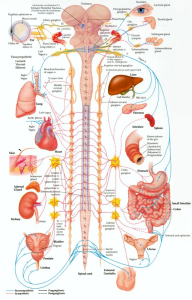 1. Lung meridian; grief, intolerance
1. Lung meridian; grief, intolerance
2. Large intestine meridian; guilt
3. Stomach meridian; disgust, greed
4. Spleen meridian; worry, anxiety about the future
5. Heart meridian; joy, anger
6. Small intestine meridian; insecurity, sadness
7. Bladder meridian; fright, impatient, restless
8. Kidney meridian; fear, indecision
9. Pericardium/circulation-sex; hurt, extreme joy, jealousy, regret
10. Triple warmer/thyroid meridian; hopelessness, depression, despair
11. Gall bladder meridian; rage, wrath
12. Liver meridian; anger, unhappiness
This is not unlike what Imam Ali (ra) said although the list above focuses on illness, Imam Ali (ra) said “The (seat of the) intellect is located in the heart. Mercy is located in the liver, Compassion is located in the spleen. The self (soul) is located in the lungs (these refer to regions in the body that affect these types of emotions from the subatomic universe).”(Adab al Mufrad, Hasan).
The Buddhist and Hindu Chakras are similar to meridians, there are many chakras (centres of energy) in the body but in the Hindu tradition there are seven that are considered the most important. This may at first seem like different opinions coming from different religions, but one look at the location of these seven chakras tells us a different story. Unlike the Lataif of Islam which are located near the centre of the chest or the Meridians of Chinese medicine which are located in the various organs in the body the Hindu Chakras are located in a vertical line starting at the head and going directly down the body, to many this may seem unrealistic because no organs in the body are located in such a vertical way, but it is perfectly accurate if we think about the spinal cord and it’s role.
When every Organ in the body wants to send a signal through the nervous system to the brain, including the heart, it sends it through the spinal cord, so along this cord at various locations on it are chakra points associated with each organ, the picture is of the nervous system and how every organ sends a signal to the brain through the spinal chord, as well as the different locations along the spinal chord, exactly like the Chakra points.
It then becomes clear that each tradition treated the body from a different part of the Chi/Charkra/Lataif system that exists in the human body, while the Chinese focused on the organs in the body and the Hindu’s focused on the spinal chord which is a step above the organs to heal physical illness, Islam focused on the workings (“psychology”) of the self which centred around the heart, through that the rest of the body would be healed as the prophet (saws) said “Truly in the body there is a morsel of flesh which, if it be sound, all the body is (spiritually and physically) sound and which, if it be diseased, all of it (spiritually and physically) is diseased. Truly it is the heart”, so Islamic scholars focused on the heart and the soul attached to it, which is the most top down approach to healing and helping man of all these systems. None of them are wrong in their approach but the Lataif deal with the highest part of mans self first then the rest of the body.


